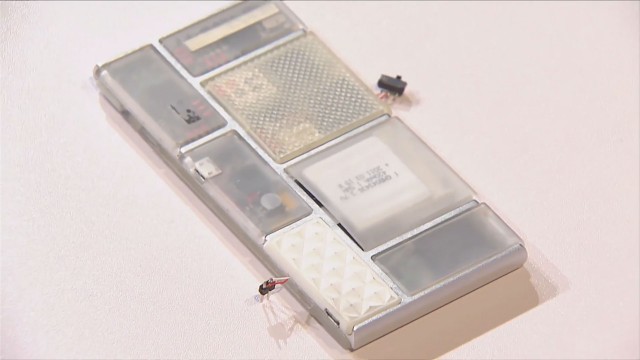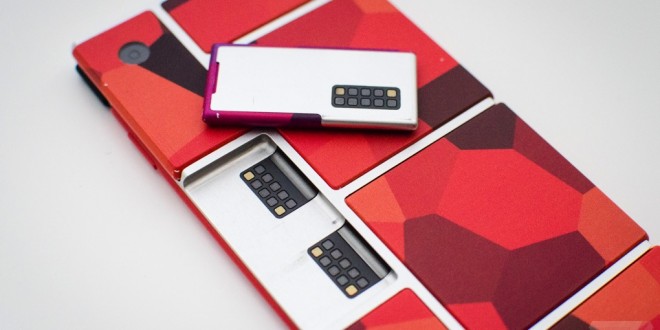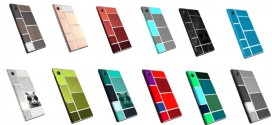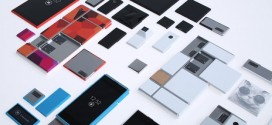The Google I/O provided a lot of new information on a lot of cool projects, like Duet, Tango or Ara. Although Project Ara is still a prototype, we could see it running (at least booting) on the event. Ara was only a concept last year in October but has come a long way since thanks to Google’s ATAP (Advanced Technology and Projects) team. Paul Eremenko, technical lead of the project offered a lot of information on the technical difficulties of designing a modular phone. Spiral 1, the Ara prototype, looks almost like a finished device except the fact that its power switch is a jumper. To our delight, the team also attempted to start the device, but it unfortunately crashed before reaching the Android homescreen. That isn’t surprising from a prototype.
Getting on the more technical side of things, Project Ara “uses FPGAs to implement a packet-switched network on device using the industry standard MIPI UniPro protocol”. Eremenko also goes on discussing a significant barrier in developing Project Ara: Overhead. “The principle challenge to modularity is overhead,” Eremenko said. “What we found was that Moore’s law, the miniaturization of electromechanical components, and a modern data protocol, could get the modularity penalty at a system level down to around 25% across the board; PCB area, device weight, and overall power consumption.” Eremenko explains how the modules will be kept in place using electropermanent magnets and also mentions socket connectors which will need to have reduced dimensions, but still be able to carry different signals effectively.
Batterylife plays an important role in today’s smarthpones and gadgets. According to Eremenko there are now battery chemistries that can provide three times the energy density of lithium-ion batteries. The biggest drawback of these battery cells is their reduced life cycle, something that can be overcome by switching them out more often thanks to Project Ara’s modularity. These new batteries could be also smaller than current batteries, providing more space for other modules.
If all goes according to plan, Google hopes to sell the first Ara smartphones in 2015, offering the bare-bone exoskeleton for $50. With a modular phone design, customizing options could be limitless. Thanks to Project Ara, we may one day be able to add new functionality or features to our smartpones just by sliding in a new tile.
 Load the Game Video Games, Reviews, Game News, Game Reviews & Game Video Trailers
Load the Game Video Games, Reviews, Game News, Game Reviews & Game Video Trailers



